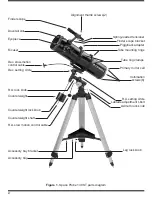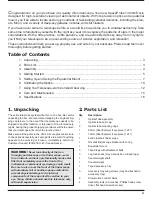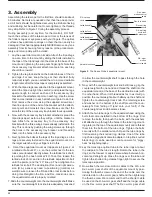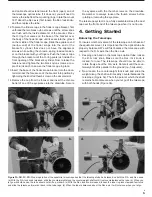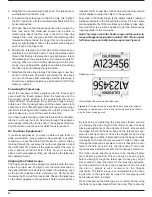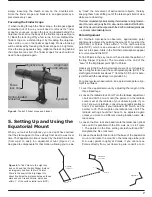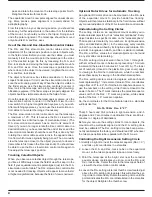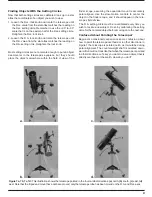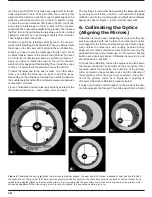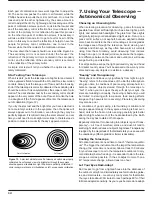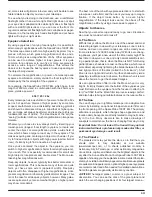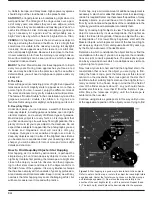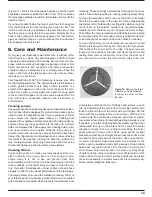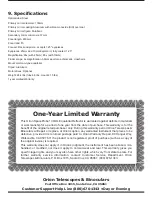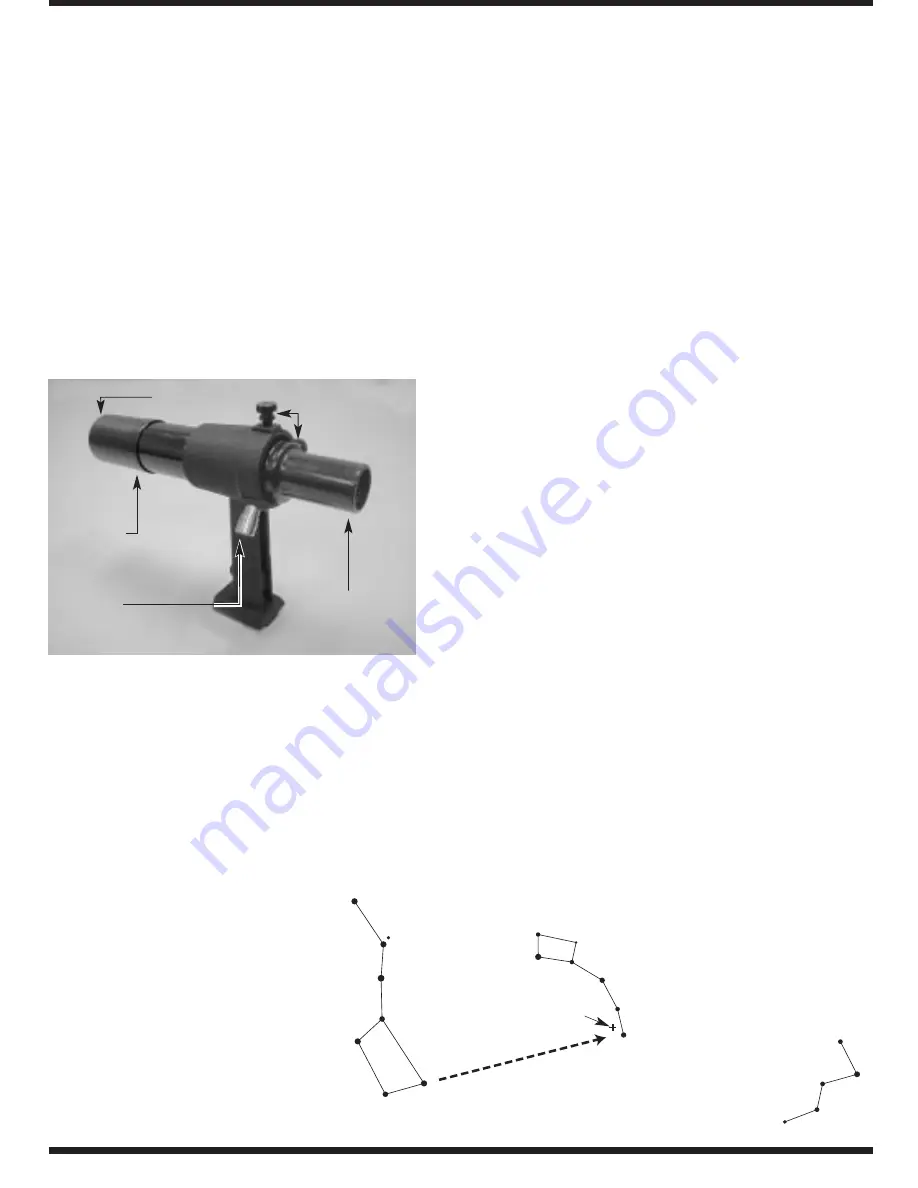
7
simply loosening the thumb screw on the dovetail slot.
Store the finder scope and bracket in an appropriate eye-
piece/accessory case.
Focusing the Finder Scope
If, when looking through the finder scope, the images appear
somewhat out of focus, you will need to refocus the finder
scope for your eyes. Loosen the lock ring located behind the
objective lens cell on the body of the finder scope (see Figure
5). Back the lock ring off by a few turns, for now. Refocus the
finder scope on a distant object by threading the objective
lens cell in or out on the finder scope body. Precise focusing
will be achieved by focusing the finder scope on a bright star.
Once the image appears sharp, retighten the lock ring behind
the objective lens cell. The finder scope’s focus should not
need to be adjusted again.
5. Setting Up and Using the
Equatorial Mount
When you look at the night sky, you no doubt have noticed
that the stars appear to move slowly from east to west over
time. That apparent motion is caused by the Earth’s rotation
(from west to east). An equatorial mount (Figure 2) is
designed to compensate for that motion, allowing you to eas-
ily “track” the movement of astronomical objects, thereby
keeping them from drifting out of the telescope’s field of view
while you’re observing.
This is accomplished by slowly rotating the telescope on its right ascen-
sion (R.A.) axis, using only the R.A.slow-motion cable.But first the R.A.
axis of the mount must be aligned with the Earth’s rotational (polar) axis
— a process called polar alignment.
Polar Alignment
For Northern Hemisphere observers, approximate polar
alignment is achieved by pointing the mount’s R.A. axis at the
North Star, or Polaris. It lies within 1° of the north celestial
pole (NCP), which is an extension of the Earth’s rotational
axis out into space. Stars in the Northern Hemisphere appear
to revolve around the NCP.
To find Polaris in the sky, look north and locate the pattern of
the Big Dipper (Figure 6). The two stars at the end of the
“bowl” of the Big Dipper point right to Polaris.
Observers in the Southern Hemisphere aren’t so fortunate to
have a bright star so near the south celestial pole (SCP). The
star Sigma Octantis lies about 1° from the SCP, but it is bare-
ly visible with the naked eye (magnitude 5.5).
For general visual observation, an approximate polar align-
ment is sufficient.
1. Level the equatorial mount by adjusting the length of the
three tripod legs.
2. Loosen the latitude lock t-bolt. Turn the latitude adjustment
t-bolt and tilt the mount until the pointer on the latitude
scale is set at the latitude of your observing site. If you
don't know your latitude, consult a geographical atlas to
find it. For example, if your latitude is 35° North, set the
pointer to 35. Then retighten the latitude lock t-bolt. The
latitude setting should not have to be adjusted again
unless you move to a different viewing location some dis-
tance away.
3. Loosen the Dec. lock knob and rotate the telescope optical
tube until it is parallel with the R.A. axis, as it is in Figure
1. The pointer on the Dec. setting circle should read 90°.
Retighten the Dec. lock lever.
4. Loosen the azimuth lock knob at the base of the equatorial
mount and rotate the mount so the telescope tube (and
R.A. axis) points roughly at Polaris. If you cannot see
Polaris directly from your observing site, consult a com-
Figure 6. To find Polaris in the night sky,
look north and find the Big Dipper. Extend
an imaginary line from the two “Pointer
Stars” in the bowl of the Big Dipper. Go
about five times the distance between those
stars and you’ll reach Polaris, which lies
within 1° of the north celestial pole (NCP).
Big Dipper
(in Ursa Major)
Little Dipper
(in Ursa Minor)
N.C.P.
Pointer S
tars
Polaris
Cassiopeia
Focus
lock ring
Figure 5. The 6x30 finder scope and bracket.
Objective lens
Alignment
thumb screws
Spring-loaded
tensioner
Eyepiece


